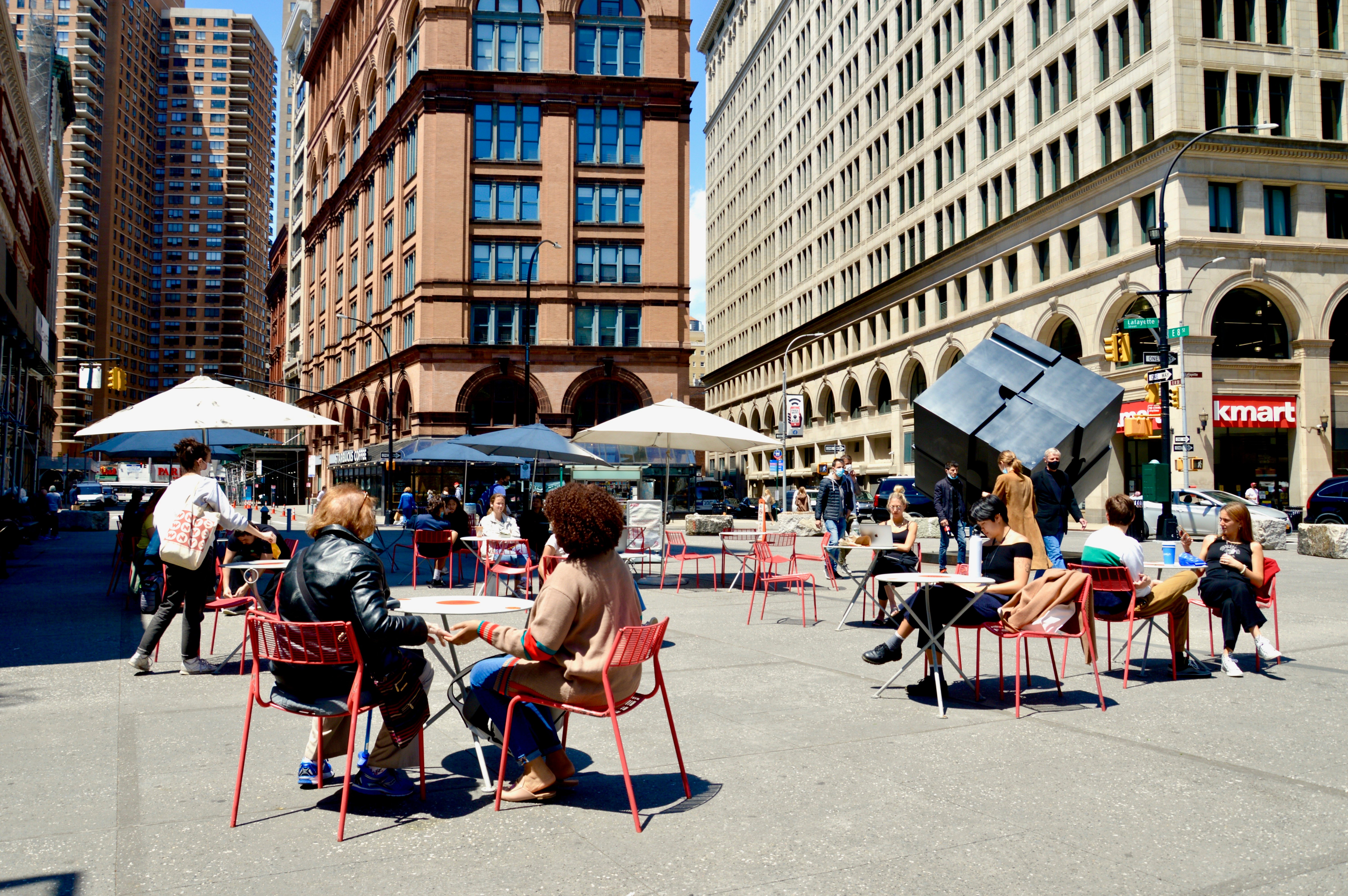
One year ago, Rashid Johnson was holed up in a makeshift workspace in the basement of his Long Island home, churning out a series of apocalyptic oil stick drawings the color of a fire alarm. They belonged to his ongoing “Anxious Men” project, the artist told Artnet News at the time. He sounded anxious—as we all did then, a month deep into the pandemic, uncertainty still the dominant mood.
Now, as we prepare to return to a semblance of normalcy, Johnson has once again turned to that same anxious red color—but this time, he’s doing so to a more optimistic end.
Next month, the artist will unveil Red Stage, a new Creative Time-sponsored public art piece that will act as both a monumental sculpture and a participatory installation.
The work’s title doubles as a physical description: Installed at New York’s Astor Place, Johnson’s piece will take the form of a 30-foot-wide red platform backed by a 13-foot-tall proscenium.
Playing out on the stage for the project’s month-long run will be any number of activations, both planned and unplanned: Creative Time-organized programs, artist-curated takeovers, and what Johnson calls the People Days, in which the site will be turned over to artists and passersby to use it as they see fit—for rehearsals and performances, or maybe meditation. (A full programming schedule—including presentations by theater director Charlotte Brathwaite and the nightlife collective Papi Juice—will be announced in the coming weeks.)
Rashid Johnson working on an “Untitled Anxious Red Drawing” (2020). Courtesy of the artist and Hauser & Wirth.
“We are still contending with so much trauma and pain from what has been experienced during the course of the pandemic,” Justine Ludwig, Creative Time’s executive director, told Artnet News. “We’re back in the world and we’re thinking about the place that we want to be a part of. There’s a lot of tension that exists there.”
For three years, Ludwig and Johnson have been in discussions about a Creative Time presentation. Initially, the director explained, they were working on a “radically different project.” The pandemic changed that and their conversations pivoted. “Community, exchange, and collaboration, and thinking about how the city itself becomes a site of activation” became the new priority, said Ludwig.
The sculpture’s design recalls the artist’s modular architectural grid structures, where cubes of bare scaffolding overflow with objects symbolic of the African diaspora: plants, pottery, shea butter sculptures. Plants will live on Red Stage, too—a symbol of the artwork’s purported status as a locus of growth and regeneration.
“It’s very much intended to be a living structure in more than one way,” Ludwig said. “That’s something we need to think about at this moment and something that’s very poetically reflected in the fact that there are plants growing off of it: What do we want to seed at this moment, what do we want to nurture? What should be growing out of this period of trauma and isolation that we all collectively experienced?”
Red Stage will be on view June 5 – July 4, 2021 on the south plaza of Astor Place.